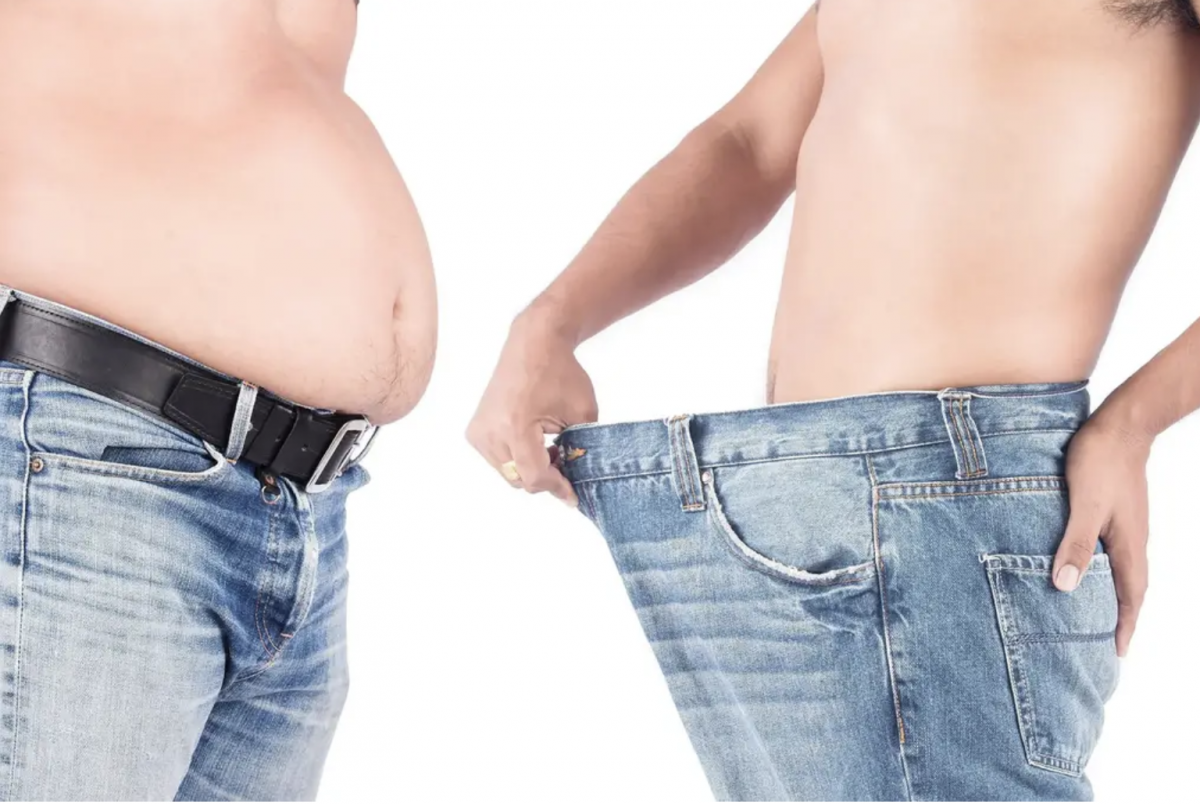Table of Contents
- Introduction
- Fat Loss Mistakes
- The Best Diet Tips For Fat Loss
- The Best Type Of Exercise For Fat Loss
Introduction
This article will empower you with the knowledge and tools you need to navigate your fat-loss journey.
Unless there is new scientific evidence that challenges the theoretical basis behind weight loss, or when a groundbreaking fat-loss pill that actually lives up to its claims hits the market — I probably wouldn't be writing another fat-loss guide for a while.
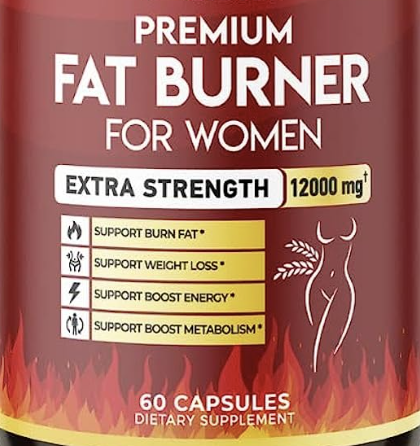
Try googling "how to lose weight fast" and I bet there would be hundreds if not thousands of links that'd pop up.
Here are the first 2 links that appeared when I entered the above search query into Google:

If you were slightly swayed into finding out more, it means their marketing team is doing a really good job!
I mean...who doesn't want to lose weight without going to a crowded gym — then getting all tired, sweaty, and uncomfortable?
Unfortunately, such "slimming treatments", or crash diets do nothing more than burn a hole in your pocket while wasting time that could've been used to read blogs like mine and articles that actually teach you how to lose weight safely and effectively.
Many of these "solutions" may help you lose weight at a rapid pace (as measured by scale weight), but a decent proportion of that lost weight will consist of fat-free mass (i.e., water and muscle) as well.
We don't want that.
We want to lose fat (i.e. stored energy from adipose tissue) and not muscle as quickly as possible.
Achieving this requires a unique approach to nutrition and exercise, which is precisely what you'll discover in this article.
You'll also learn about some common mistakes made when attempting to lose fat.
Fat Loss Mistakes (Don't do this!)
Let's start out with what NOT to do.
Most people, particularly when misguided, believe that losing weight involves:
1. Eating a very low-calorie, low-protein/carb diet
2. Doing lots of cardio/aerobics
3. Doing high-rep/low-weight strength training
4. Change exercises frequently
Sure, it's better than not doing anything at all, and it'd probably get you through the first few kilos/pounds.
However, you'll likely reach a plateau after 1-2 months and it'll also have made you “skinny fat" (See below)
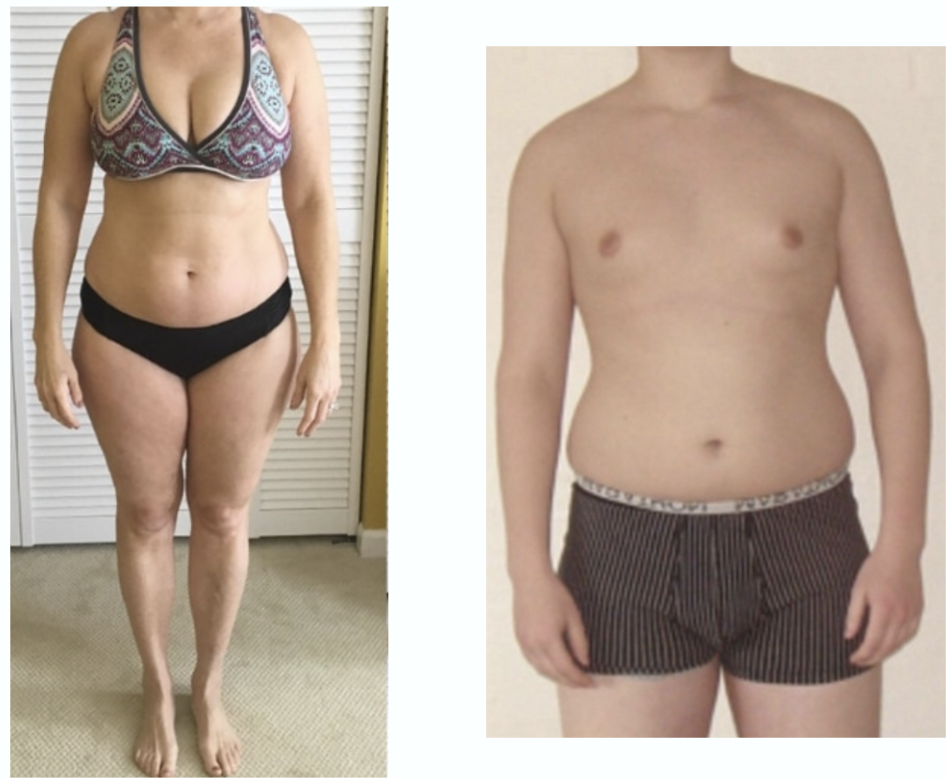
I'm not saying these people have to be ashamed of their bodies.
And I'm sure we all have results we want to achieve out of the gym:
To lose fat, optimize and improve muscle mass, and therefore, improve health outcomes.
We don't want to get stuck in an endless loop of training hard and not achieving anything out of that hard work.
Fat-Loss Mistake #1: Eating a low-calorie, low-protein, and/or a low-carb diet
Many popular fast weight-loss diets focus on significantly reducing calorie intake and protein consumption.
However, this approach not only leads to fat loss but also causes rapid muscle loss. Moreover, inadequate protein intake can leave you feeling unsatisfied after meals, increasing the risk of overeating and hindering fat loss progress.
On the other hand, low-carbohydrate diets have been shown to reduce workout performance.
When you're on a very low-calorie diet, your body will do what it can to off-set that deficit so that your body weight is close to its comfortable set-point, also known in the literature as the set-point model (yes the human body doesn't favor change, and it is smarter than you think it is).
Some examples of the above include;
- An increase in the production of hunger hormones like ghrelin, which stimulates appetite, leading to increased food consumption.
- A reduction in unconscious movement, also known as Non-Exercise Activity Thermogenesis (NEAT), lowers your Total Energy Expenditure (TEE), or how many calories your body burns throughout the day.

Fat-Loss Mistake #2: Doing a LOT of cardio
Don't get me wrong here, cardio or aerobic exercise is an indispensable tool for optimizing heart and brain health.
But when you look at it from a fat-loss perspective, doing too much may not only be detrimental to losing fat but it'll also affect performance and recovery from strength training.
Additionally, a study revealed that excessive aerobic exercise could trigger compensatory increases in food intake, hindering fat loss similar to Mistake #1 above. This may lead to a net-positive caloric balance and subsequent weight gain.
Fat-Loss Mistake #3: Doing The Wrong Type Of Strength Training
I'd like to point out two common misconceptions when training for fat loss.
First, strength/Resistance training is often underestimated for its fat-loss benefits, with some believing it only builds muscle (and that they'll get too "bulky" in the process).
Meanwhile, others prioritize high-rep, low-weight lifting in an attempt to "tone up" (which couldn't be more false).
However, both notions are misguided. To achieve maximum fat loss while preserving or even building muscle,
We need to focus on heavy, compound resistance training.
Research indicates that this approach is most effective in maintaining muscle, which indirectly boosts your metabolism (mainly your Resting Metabolic Rate, which falls under REE in Figure 1 above), augmenting the fat-burning process.
Fat-Loss Mistake #4: Changing up exercises/training routine too frequently
Another less common but still prevalent problem amongst those new to lifting weights is that they train without a plan.
You've probably read or heard this somewhere:
"He who fails to plan is planning to fail"
Sir Winston Churchill
Imagine making a year's worth of progress in the gym, and then losing it all in one fat-loss phase.
During and near the end of a cut, energy levels usually dip, affecting your ability to push hard in the gym.
We want to maintain our strength levels in the major movements as much as possible (and to apply progressive loading, even on a cut).
Thus, frequently changing your exercise routine makes it difficult to assess if you've maintained strength in the important compound lifts.
Furthermore, it makes it difficult to track your training volume (defined here as sets x reps x weight).
The Best Diet Tips for Fat Loss

If you want to lose weight week after week while preserving (or even gaining) muscle, without struggling with hunger, cravings, lethargy, and poor mood — Here’s what to do:
1. Utilize an aggressive caloric deficit of 20-25%
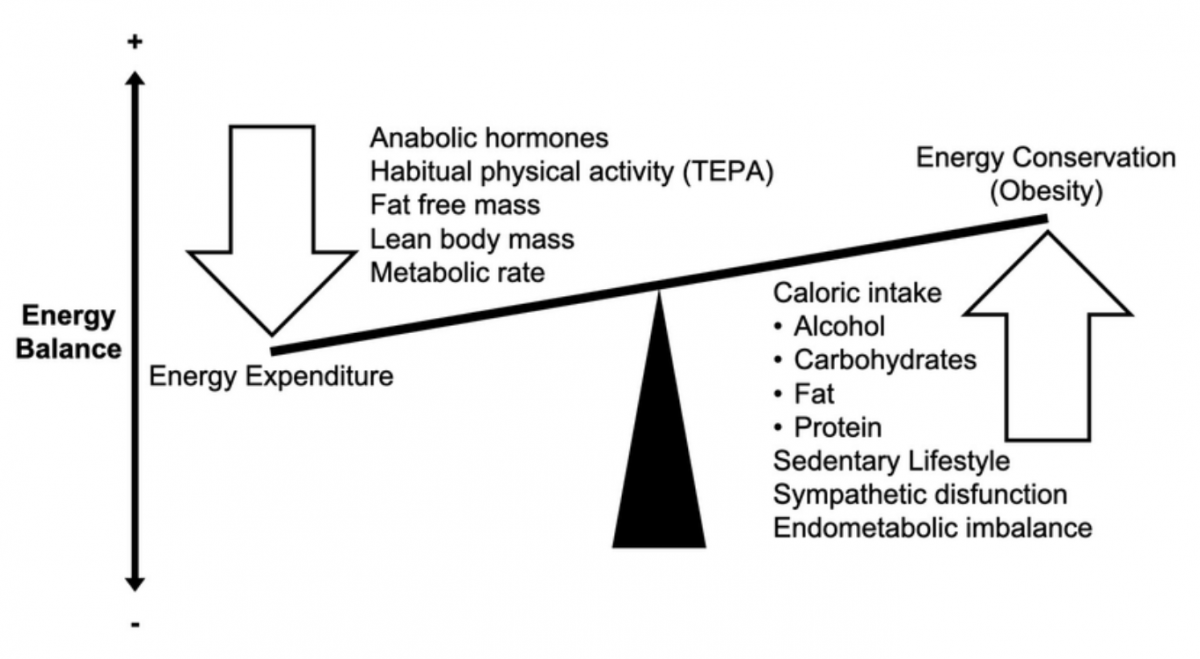
In my previous article, I mentioned that a calorie is a calorie when it comes to body weight regulation, and this is supported by a large body of evidence — It's very clear that weight loss (or weight gain) is a result of energy imbalance, contributed by a plethora of intrinsic (what we can't control, i.e. hormonal levels, genes) and extrinsic (what we can control, i.e. food intake and exercise) factors.
In simple terms, if you burn more calories than you eat, you WILL lose weight. Likewise, if you're gaining body fat, it means that you've been eating more than what your body expends daily, known as TDEE (see Figure 1), for an extended period.
This unused energy has to go somewhere, and as you've probably guessed by now — it goes right into our body fat stores (or more specifically, stored in the adipocytes as triglycerides).
I recommend a 20-25% caloric deficit because it allows you to lose weight at a rapid pace while avoiding hunger, lethargy, and the other downsides of low-calorie dieting. Going any higher would also increase the likelihood of muscle and strength loss.
2. Eat a high-protein, high-carb diet
Multiple studies have shown that a high-protein diet helps:
- Maintain muscle mass, while on a low-calorie diet for fat loss
- Stimulates muscle protein synthesis (mPS), even without resistance training.
- Improve recovery between resistance training or aerobic workouts
- Improve satiety between meals and thus, leaving you less susceptible to over-eating.
The main takeaway here is that a high-protein diet is superior to other types of diets for fat loss (see Figure 3 below)

You may have also heard people that to lose weight fast, you have to cut out carbs, or specifically in Asian diets, to "eat less rice".
Studies have proven this to be false.
In general, we want to maintain carbohydrate intake as high as possible when dieting as it:
Excess carbohydrates are stored in your muscles as glycogen, a form of stored energy that is used during high-intensity exercise. A caveat here, however, is that if you're sedentary and eating too many calories, these will still get stored as body fat.
So how much protein and carbohydrates should we be eating?
Pretty straightforward:
- 2-3g / kg body weight of protein if you're relatively lean. I'd tend to lean on the higher end of that range. Note: If you're overweight i.e. >25% body fat for men and 35% body fat for women, I'd go with 35-40% of calories from protein.
- 2-5g/ kg body weight of carbohydrates. Deciding which end of this range depends on your activity levels. If you're very active, consume 4g-5g/kg body weight.
Again, these are the recommended ranges based on research. However, diet sustainability is an important factor to consider when it comes to long-term fat loss and maintenance, so it may be wise to choose something you can stick to.
? Like what you're reading so far and find it insightful?
Stay in the loop and never miss a new post by subscribing to my newsletter here.
3. Take supplements proven to aid fat loss
Unfortunately, as described at the start of this article, most supplements are worthless when it comes to losing fat.
However, there are two supplements, according to research that can help with muscle retention and fat loss indirectly.
1. Creatine Monohydrate
Creatine can be found naturally in red meats and seafood. But to consume enough of it can be challenging for many. For example, a pound of uncooked beef and salmon has about 2 grams of creatine, whereas the recommended dosage for creatine is 3g-5g daily.
Creatine works by increasing intramuscular creatine concentrations, which directly influences the phosphagen energy system that is used in power and explosive activities such as resistance training.
When we increase the amount of phosphocreatine in our muscles, we can exercise at higher intensities, allowing us to do more work during our workouts. These lead to greater improvements in strength, muscle mass, and performance.
2. Caffeine

You'd probably be surprised to hear this, but caffeine, when taken 60 minutes prior to exercise at a dose of 3-6mg/kg (which roughly equates to about two cups of coffee) has been shown to improve workout performance,
Nonetheless, researchers have found that caffeine mainly improves aerobic performance (i.e. muscle and aerobic endurance) to a greater extent than anaerobic performance (i.e. muscle strength and power).
There are also some questions that need to be answered, such as the effects of caffeine on habituated individuals, if the source of caffeine matters, caffeine on trained versus untrained individuals, and the long-term effects of caffeine on performance (most studies only study the acute effects of caffeine supplementation).
The Best Type of Exercise for Fat Loss
Many people who start their fat loss endeavor usually believe that diet and aerobic exercise (i.e. running) are all that matters.
However, by doing so, they miss out on the numerous health and body composition benefits that strength training provides. Here are a few training tips to optimize fat loss.
1. Performing heavy, compound progressive resistance training

The jury is definitely not out on this one, as evidenced by multiple well-designed studies.
Strength training helps to retain muscle and burn fat.
Period.
But is there an optimal way to strength train? Probably.
Given the vast amount of information out there, it's hard to decide what exercise to do and how best to structure your workout program.
By heavy compound strength training, what I really mean is performing multi-joint exercises (such as squats, deadlifts, and rows) at 70-85% of your 1 repetition max (1RM).
Training at this intensity would allow for the weight to be lifted within 4-10 reps before failing.
Research also shows that high-intensity resistance exercise increases resting energy expenditure (REE) 72 hours even after you stop training, helping you lose fat faster.
You don't need to do a lot to experience the benefits; just two or three weightlifting workouts per week are sufficient to see noticeable improvements.
2. Use "Cardio" as a supplementary tool, and be strategic about it
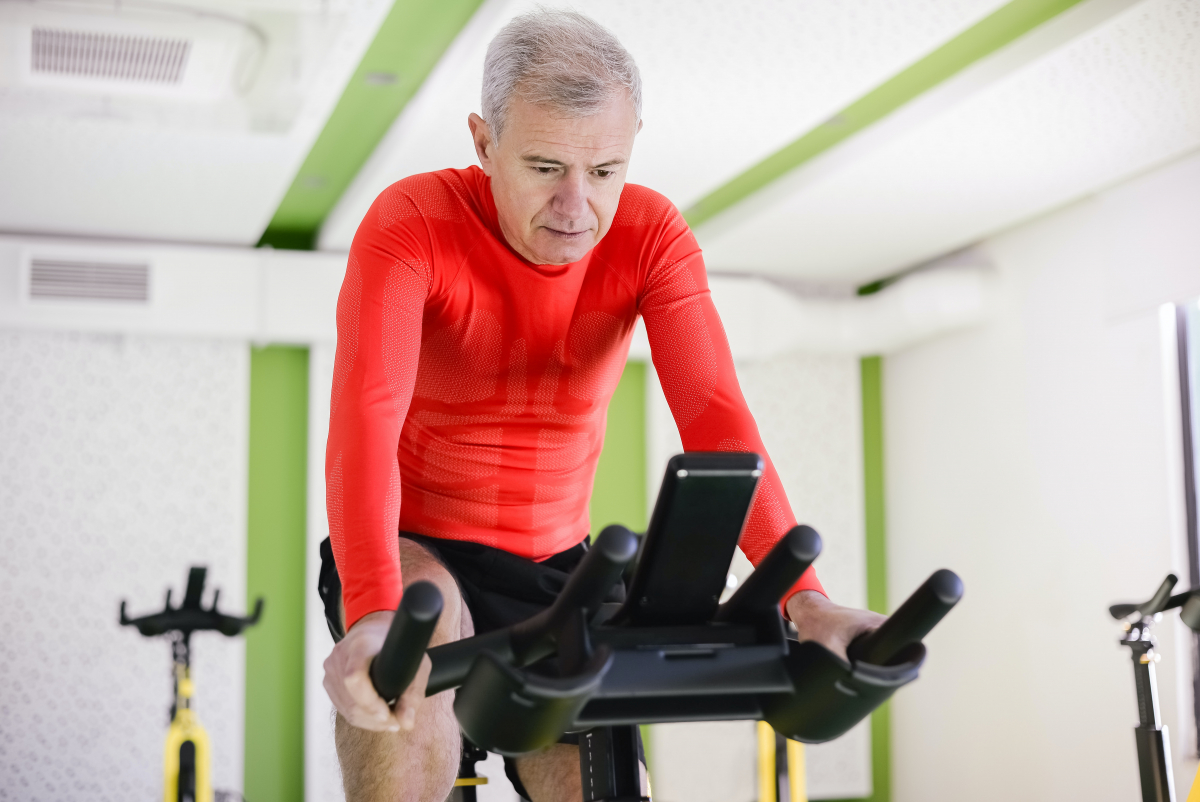
I know you think I'm crazy for saying this, but you don't need to run an hour or more a day to lose fat. No doubt they burn calories, but so does strength training.
You just need to do enough to reach your desired rate of fat loss and to maintain a reasonable level of aerobic fitness.
Here's how I'd implement cardio into a fat-loss plan:
1. Opt for low-impact over high-impact activities, this can be walking on an incline treadmill or riding on a stationary bike.
2. Perform cardio at a steady state, i.e. at low-moderate intensity instead of HIIT, as both have similar fat loss benefits.
3. Do cardio on days when you're not strength training to minimize the interference effect. If that's not possible due to other commitments, I'd insert cardio after the strength training work as there's new evidence that doing cardio before strength training can negatively affect explosive strength and power.
4. Limit your cardio to 20-45 minutes per session, and not more than half the time you spend strength training. For example, If you strength train 3 hours per week, I'd do no more than 1.5 hours per week of cardio work. Again, our goal here is to get stronger and leaner.
? Like what you're reading so far and find it insightful?
Stay in the loop and never miss a new post by subscribing to my newsletter here.
3. Stay active throughout the day

If you recall, there are several components to our Total Daily Energy Expenditure, and NEAT makes up a good 20% of it. With this knowledge, we can take advantage of it by staying physically active throughout the day.
If you think about it, you only go to the gym for a few hours each week, and the remaining time is either spent asleep or typing away at your desk.
Therefore, every small effort counts, like choosing stairs over escalators, doing household chores, or parking farther away from work.
According to research, find various ways to incorporate these activities throughout your day, as they can add up to hundreds of calories burned daily.
Alright, folks, that's it for today, stay tuned for the next article, where I'll be writing about stretching and its effects on the body, specifically:
- the various types of stretches available
- their effectiveness in improving muscle length/extensibility, and
- whether there are more effective methods we can use to better warm up and get ready for a workout.
Hope you learned something from this piece! You can help me by:
1) Sharing this article with friends and family, if you think it'll help them. Links to share this article on social media channels can be found below
2) If you feel that my content is inaccurate, misleading, or outdated. Please leave a comment below the article in question.

Marcus Oon
Marcus is a practicing physiotherapist and strength & conditioning specialist located in Singapore. He completed his Undergraduate (Hons) degree at the Singapore Institute Of Technology - Trinity College Dublin, and his Strength & Conditioning certification at the National Strength & Conditioning Association (NSCA). He is also active in the NSCA's Health and Wellness, Powerlifting, and Sports Medicine/Rehabilitation Special Interest Groups.
Found this article informative?

